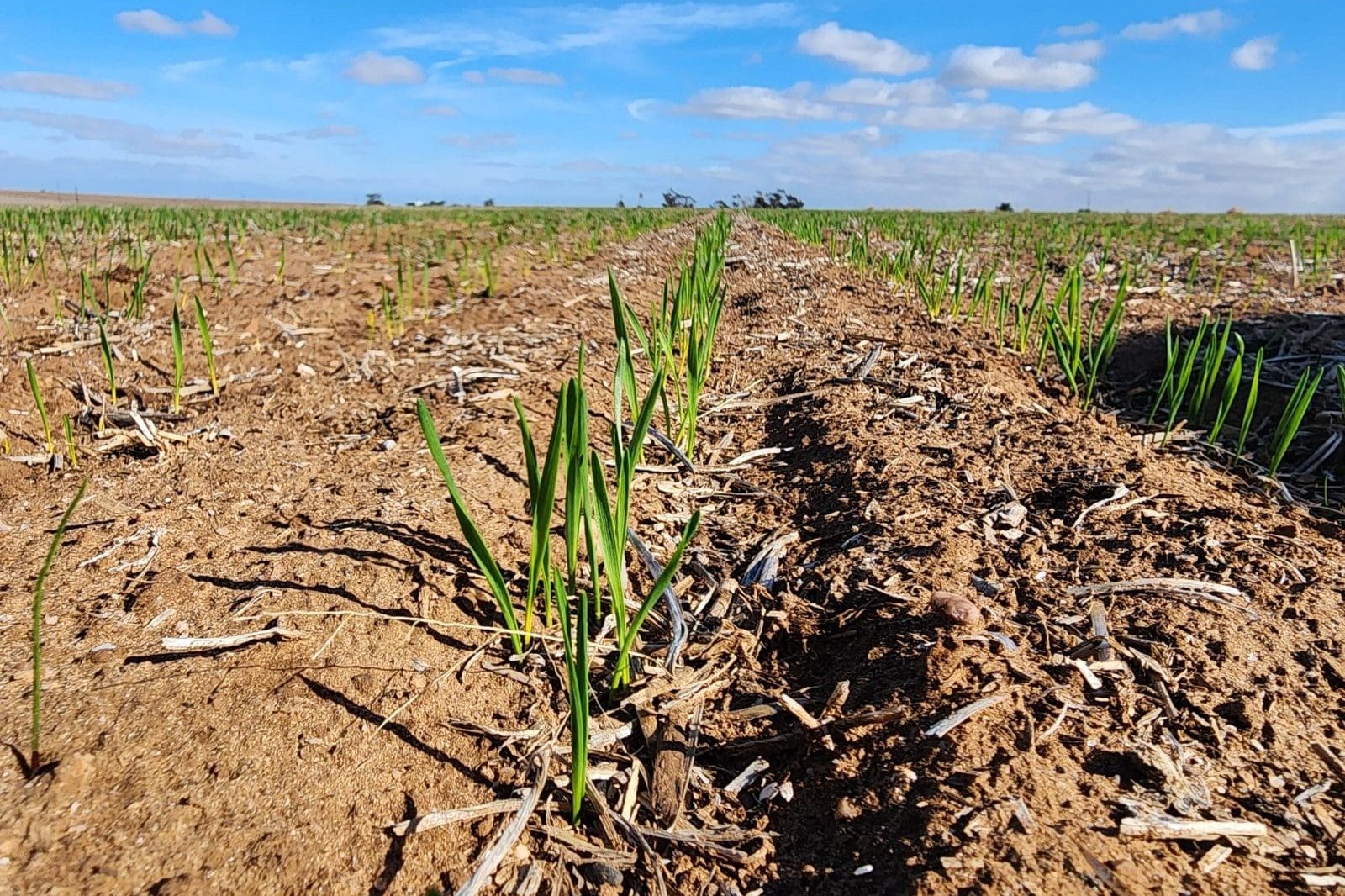
SA crops including this wheat one in the Barossa Valley are crying out for rain. Photo: Corbin Schuster
DRY conditions in South Australia and western Victoria have boosted demand for feed barley to lift up-country prices above weakening export values.
These have seen values in quoted markets drop this week by roughly $5-$15 per tonne, with the exception being sorghum, which has firmed slightly as the moisture-affected tail of harvest restricts traded volumes.
Some grain accumulated for export out of SA and Vic is being redirected into the domestic market, and on-farm sales are also going locally for a premium to what container packers and port sites are offering.
Feedmills, graziers and mixed farmers are all in the market for far more grain, fodder and pulses than normal at this time of year, but 10-25mm forecast for next week could quickly temper demand.
| Today | Jun 6 | |
| Barley Downs | $408 | $420 |
| ASW wheat Downs | $410 | $415 |
| Sorghum Downs | $355 | $350 |
| Barley Melbourne | $358 | $368 |
| ASW wheat Melbourne | $375 | $388 |
Table 1: Indicative prices in Australian dollars per tonne.
Volume thin in north
A week of mostly dry weather in Queensland and northern New South Wales has allowed grain to be delivered to domestic consumers as scheduled, but the cold spell has done little to speed the tail end of the Darling Downs sorghum harvest.
Nonetheless, loads from farms are being turned out of high-aeration silos and driers, with exporters able to blend up to required specifications from what is being delivered.
Southern Qld consumers are looking further afield for barley now that uncommitted local stocks are down to the wire.
“Sorghum’s very flat, and multigrade sorghum is going into Brisbane,” Knight Commodities Goondiwindi-based broker Gerard Doherty said.
Providing a spike in values for feedgrain in the northern market are peripheral consumers in the North Burnett, Wide Bay and adjacent regions.
“That’s giving us some ex farm values above where the Downs market is.”
Qld consumers are sourcing grain from well into NSW as the thin wheat-export program out of Newcastle starts to tail off and growers in northern NSW take comfort from what looks like it well at worst be an average-yielding year for the crop now in the ground.
Southern drought lifts demand
Very dry conditions in high-rainfall grazing and mixed farming areas of SA’s South East and Vic’s Western District have brought unexpected demand into the feed market.
This has seen commercial feedmills and graziers compete for increased amounts of barley, wheat, oats, field peas, and faba beans.
Bulk handlers large and small are taking the unusual step of out-turning truckloads for the domestic market to satisfy demand brought about by an extremely dry autumn.
Many farms in SA and western Vic have had less than one-third their annual average rainfall in the calendar year to date, and some canola and winter cereals that could normally be relied on for grazing now have yet to germinate or establish.
GeoCommodities broker Brad Knight said producers with livestock to feed are looking locally to get a load or two to help them through this dry period.
“Sales are neighbour to neighbour, cousin to cousin, mate of a mate, and then further afield until they can get what they’re after,” Mr Knight said.
“It’s very unseasonal for them to be buying grain this late; normally they’ll buy late summer and early autumn, and to not have had any real rain since then is very rare.”
While large-scale feedmills with multiple blending options are happy to incorporate wheat into their rations, farmer demand is focused on barley.
“It feels like the barley market’s gone into a supply-demand rationing scenario, and it’s trying to discourage exports.
“That market’s been increasing over the past few weeks but what’s happening has been masked by the general market rally.”
While the Melbourne market normally trades at $20-$30/t above the on-farm southern Wimmera market to cover road freight, the premium is more like $15/t, to indicate the on-farm market has lifted on up-country demand.
Prior to southern drought demand kicking in, Australian feed barley was already unattractive to offshore markets when compared with other origins.
“Barley is hard to sell if you’re relying on traditional export markets.”
Up-country wheat values are also getting a kick from drought demand as large-scale feed manufacturers chase it, and pulses too.
“Protein is in strong demand for feed.”

HAVE YOUR SAY